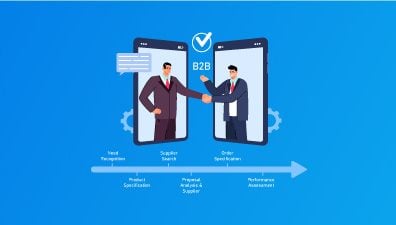Omnichannel marketing refers to a multi-channel sales approach that provides customers with a seamless shopping experience, whether they’re shopping online from a desktop or mobile device, by telephone, or in a brick-and-mortar store. This strategy integrates various channels and platforms to create a cohesive brand experience, ensuring that the customer journey is fluid and uninterrupted. By leveraging data and technology, businesses can deliver personalized and consistent interactions across all touchpoints, enhancing customer satisfaction and loyalty.
In this blog, we explore the best practices, success stories, and cutting-edge techniques that define omnichannel marketing. Whether you’re looking to enhance your current strategy or seeking inspiration for a new approach, these omnichannel marketing examples will provide the knowledge and inspiration you need to thrive in a competitive marketplace.
Table of Contents
Top 5 Omnichannel Marketing Examples to learn from
Real-world omnichannel marketing examples provide valuable insights into how leading brands are effectively integrating multiple channels to deliver seamless and cohesive customer experiences. By examining these omnichannel marketing examples, we can uncover the strategies and technologies that drive success in diverse industries. This section will delve into five exemplary omnichannel marketing examples, showcasing how each brand has harnessed the power of omnichannel strategies to enhance customer engagement, drive sales, and build lasting loyalty. From retail giants to innovative tech companies, these case studies will illustrate the transformative impact of well-executed omnichannel marketing campaigns.
Oasis
Oasis is a British fashion retailer renowned for its stylish and contemporary clothing for women. Over the years, Oasis has established itself as a prominent player in the fashion industry by providing high-quality products and exceptional customer service. Recognizing the shifting consumer behavior towards digital shopping, Oasis embarked on a mission to integrate their online and offline channels seamlessly, resulting in a highly successful omnichannel marketing strategy.
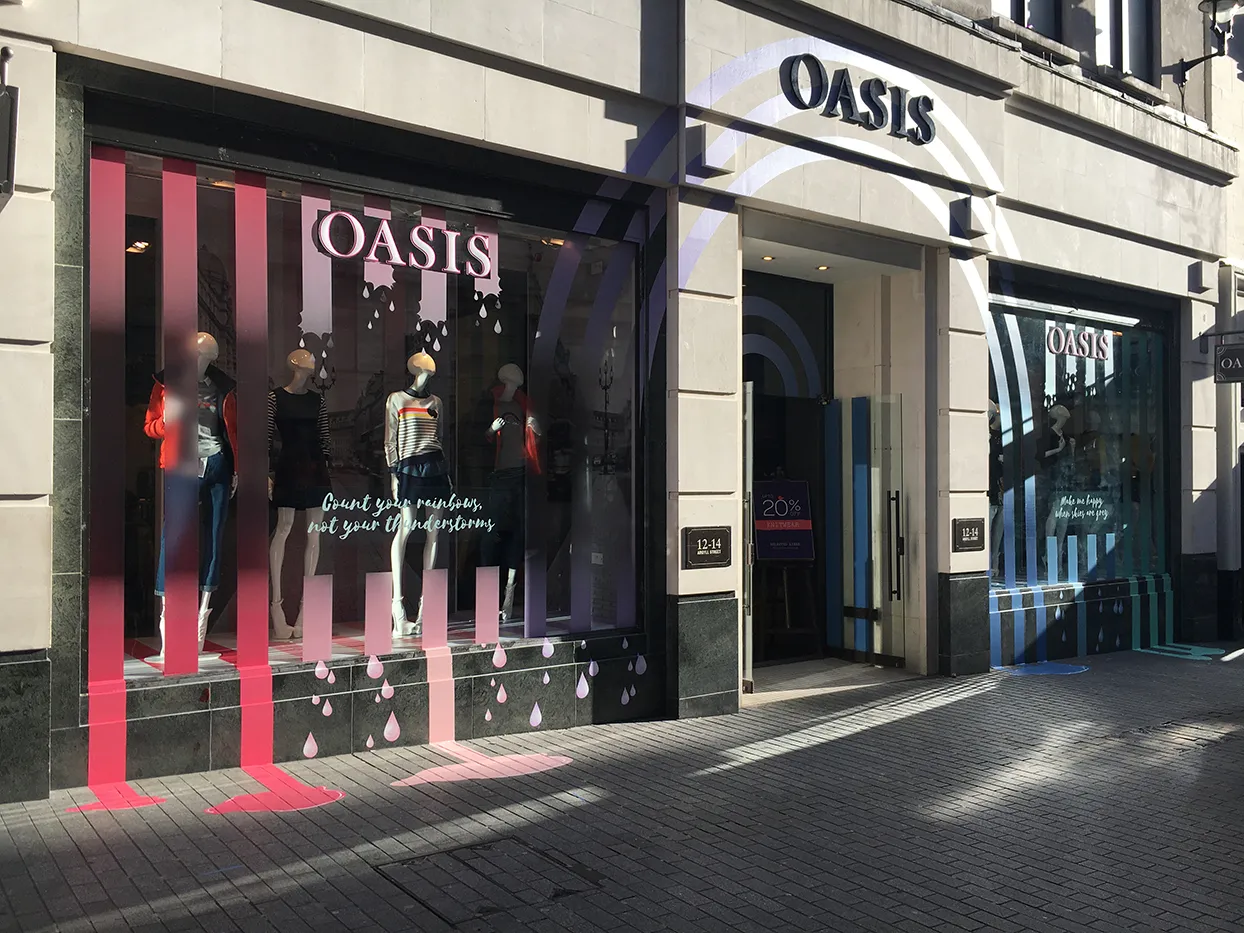
Founded in 1991, Oasis quickly gained popularity for its trendy and accessible women’s fashion. The retailer expanded rapidly, opening numerous physical stores across the UK and internationally. With the rise of eCommerce and changing consumer expectations, Oasis identified the need to innovate and adapt to maintain its competitive edge. The company decided to implement an omnichannel approach to unify its customer experience across all platforms, ensuring consistency and personalization.
Oasis’s journey towards being one of the omnichannel marketing examples began with a clear understanding of the evolving retail landscape. Consumers were no longer confined to a single shopping channel; instead, they expected a seamless experience across online and offline touchpoints. Oasis aimed to meet these expectations by creating an integrated system that leveraged technology and data to enhance customer engagement and satisfaction.
Oasis Omnichannel Marketing Strategy
- Unified Customer Experience: Oasis interconnected their website, mobile app, and physical stores to create a seamless shopping experience. Customers could browse products online, check availability in stores, and reserve items for in-store pickup. This integration ensured a consistent experience across all platforms. Oasis also maintained consistent branding and messaging across all touchpoints, reinforcing brand identity and building customer trust. Whether through social media, email, or in-store interactions, customers encountered the same brand voice and values.
- Personalization and Customer Data Integration: Oasis collected customer data from various sources, including online browsing history, in-store purchases, and customer feedback. This data was analyzed to understand customer preferences and behaviors. Using advanced analytics, Oasis offered personalized product recommendations and targeted marketing campaigns. Customers received tailored suggestions based on their past interactions and preferences, enhancing their shopping experience. Oasis utilized customer data to send personalized emails and advertisements. By delivering relevant content, the brand increased engagement and conversion rates.
- Mobile Integration: Oasis recognized the growing importance of mobile devices in the shopping journey. Thus, they developed a user-friendly mobile app that allowed customers to browse products, make purchases, and receive personalized offers. The app included features like barcode scanning for additional product information. Additionally, Oasis also implemented mobile payment solutions such as Apple Pay and Google Wallet, making transactions quick and convenient. Customers had the option to receive digital receipts, which reduced paper waste and enabled Oasis to follow up with marketing messages and feedback requests.
- Click-and-Collect Service: To bridge the gap between online and offline shopping, Oasis introduced a click-and-collect service. Customers could place orders online and pick them up at a nearby store. This service not only drove foot traffic to physical stores but also provided customers with flexibility and convenience.
- Social Media Engagement: Oasis effectively utilized social media platforms to engage with customers and promote its products. Oasis regularly posted engaging content on social media, including fashion tips, styling advice, behind-the-scenes looks, and user-generated content. This fostered a sense of community around the brand. Their social media platforms served as a channel for customer service. Oasis promptly responded to customer inquiries, building strong relationships and loyalty. Oasis also partnered with fashion influencers to expand their reach and create authentic content that resonated with their target audience.
- In-Store Technology: Oasis enhanced the in-store experience by incorporating technology such as digital kiosks and interactive displays. They have implemented iPads in stores, allowing sales associates to access the entire online inventory. This means that if a product is not available in-store, staff can quickly order it for the customer online, ensuring they do not leave empty-handed. This integration of digital tools in physical stores bridges the gap between online and offline shopping. These technologies also provided customers with additional information about products, styling tips, and the ability to check stock availability. The interactive elements made shopping more engaging and informative. Some stores even featured AR mirrors that allowed customers to virtually try on outfits, making shopping more interactive and enjoyable.
Outcomes
The integration of online and offline channels at Oasis led to a significant increase in sales and revenue. By providing a seamless and convenient shopping experience, Oasis saw higher conversion rates as customers found it easier to transition between browsing online and purchasing in-store. The personalized experience offered by Oasis, driven by data analytics and tailored recommendations, further contributed to this growth. Customers appreciated the relevance and convenience of their shopping journeys, which resulted in repeat purchases and higher average order values. Consequently, Oasis reported substantial growth in both online and in-store sales, demonstrating the effectiveness of their omnichannel strategy.
Oasis’s commitment to delivering a consistent and personalized shopping experience played a crucial role in enhancing customer loyalty. By integrating their customer data and leveraging it to provide personalized offers and recommendations, Oasis made each customer feel valued and understood. Their loyalty programs, designed to reward repeat customers, further incentivized continued patronage. As a result, Oasis was able to foster strong customer relationships, which translated into increased customer retention and repeat business.
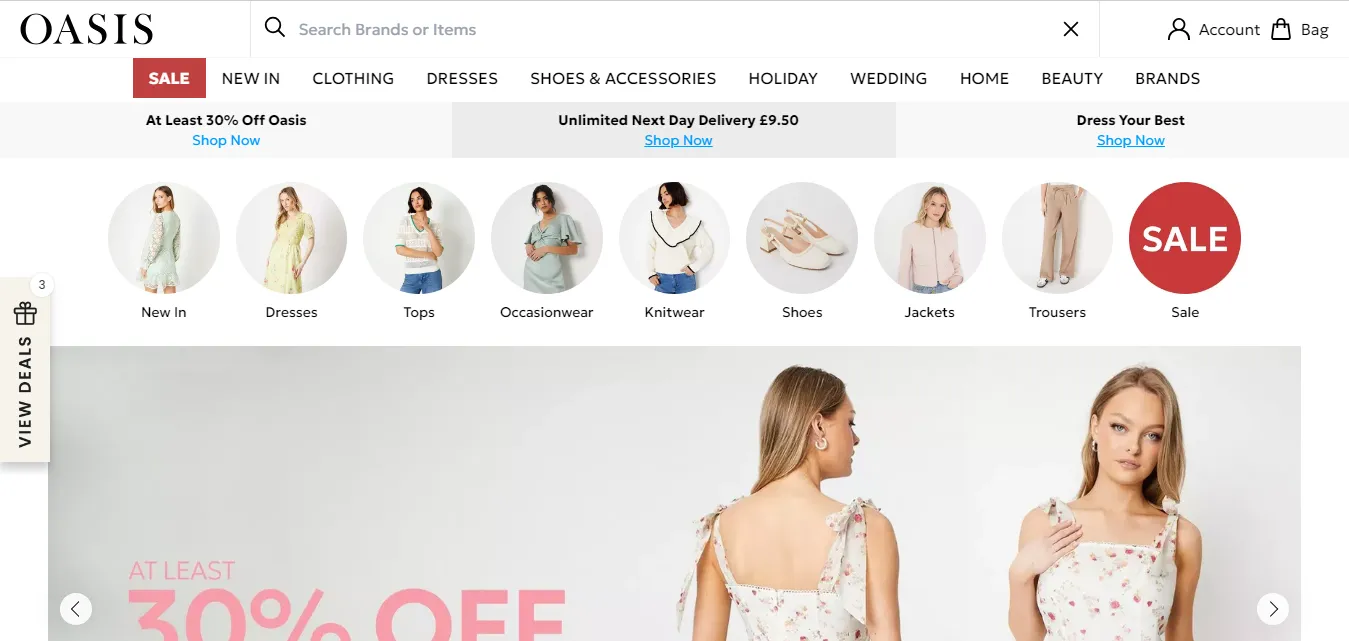
The implementation of the click-and-collect service and in-store technology significantly improved operational efficiency at Oasis. This approach allowed customers to place orders online and pick them up in-store, which not only enhanced convenience but also optimized inventory management. Centralized inventory management systems enabled Oasis to provide real-time stock updates, reducing the likelihood of stockouts and overstock situations. This efficiency in operations also streamlined supply chain processes, resulting in cost savings and better resource utilization.
Oasis’s active engagement on social media and personalized marketing campaigns substantially strengthened its brand presence. By maintaining consistent and engaging communication across various platforms, Oasis was able to increase brand visibility and build a robust online community. The personalized content and interactions helped foster a sense of community among customers, making them feel more connected to the brand. This personal connection and sense of belonging enhanced Oasis’s market position and brand strength, making it a preferred choice among fashion-conscious consumers.
Evaluation and Analysis
Through their seamless integration of online and offline channels, personalized marketing efforts, and effective use of technology, Oasis set a benchmark for others in the industry to follow. Oasis’ success in omnichannel marketing can be attributed to several key factors, each contributing to the seamless and engaging customer experience they offer.
At the heart of Oasis’ strategy is a deep commitment to understanding and anticipating customer needs. By placing the customer at the center of their approach, Oasis has created a shopping experience that is both convenient and personalized. Every interaction, whether online or in-store, is designed to meet and exceed customer expectations. This customer-centric approach ensures that Oasis remains attuned to the desires and preferences of their clientele, fostering loyalty and satisfaction. For instance, personalized recommendations based on past purchases and browsing history make customers feel valued and understood, enhancing their overall shopping experience.
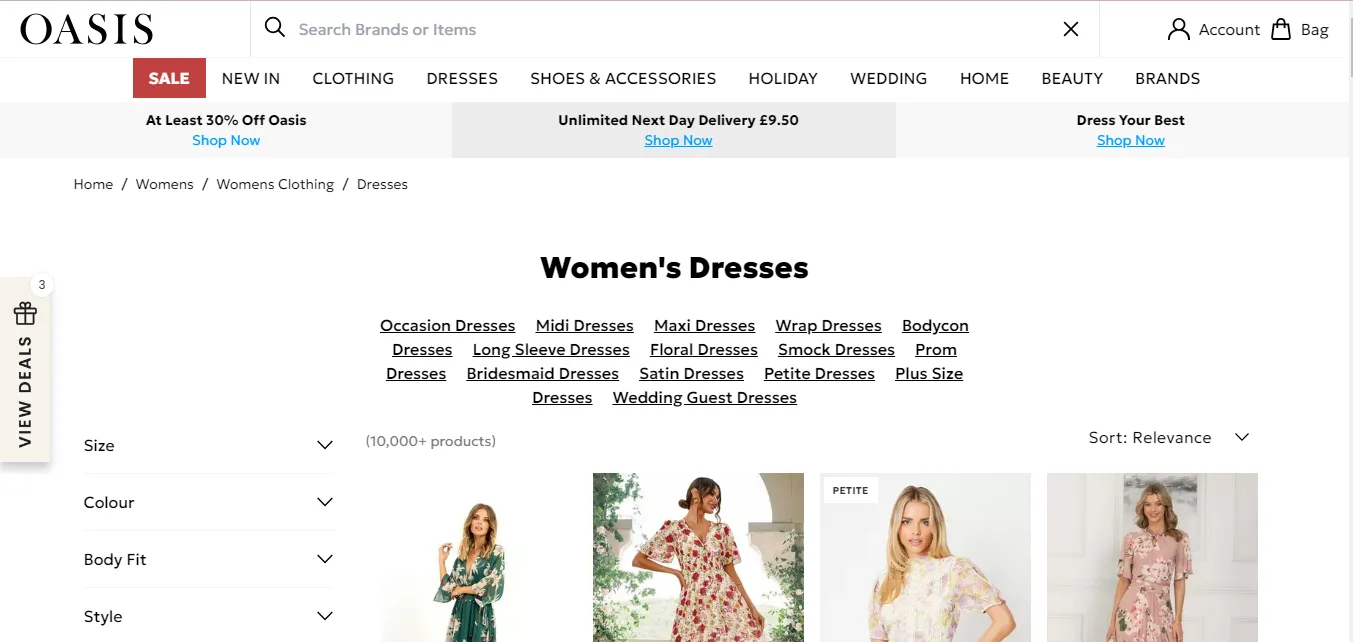
Oasis’ willingness to invest in cutting-edge technology sets them apart from their competitors. In-store iPads and a comprehensive mobile app are just a few examples of how technology is used to enhance the shopping experience. The iPads allow sales associates to access the entire online inventory, ensuring that customers can order products even if they are not available in-store. The mobile app offers features like personalized recommendations, store locators, and exclusive promotions, making it a vital tool for engaging customers. This technological integration is crucial for creating a seamless omnichannel experience, ensuring that customers have access to the full range of products and services, regardless of their location.
Oasis leverages data analytics to inform their marketing strategies, enabling them to deliver targeted and relevant marketing messages. By analyzing customer behavior and preferences, Oasis can personalize the shopping experience, increasing the likelihood of conversion. This data-driven approach allows Oasis to optimize their marketing efforts, ensuring that every communication resonates with the customer. For example, targeted emails and app notifications based on individual shopping habits help keep customers engaged and more likely to make repeat purchases. This not only drives sales but also enhances customer loyalty by making customers feel understood and valued.
The seamless integration of Oasis’ online and offline channels ensures a consistent customer experience, no matter how they choose to shop. Features like the Click and Collect service exemplify this integration, allowing customers to purchase products online and pick them up in-store. This service not only provides convenience but also drives additional in-store purchases. In-store technology, such as iPads that allow sales associates to order out-of-stock items for customers, further bridges the gap between digital and physical shopping experiences. By providing multiple options for completing purchases, Oasis enhances convenience and accessibility, making it easier for customers to shop on their terms.
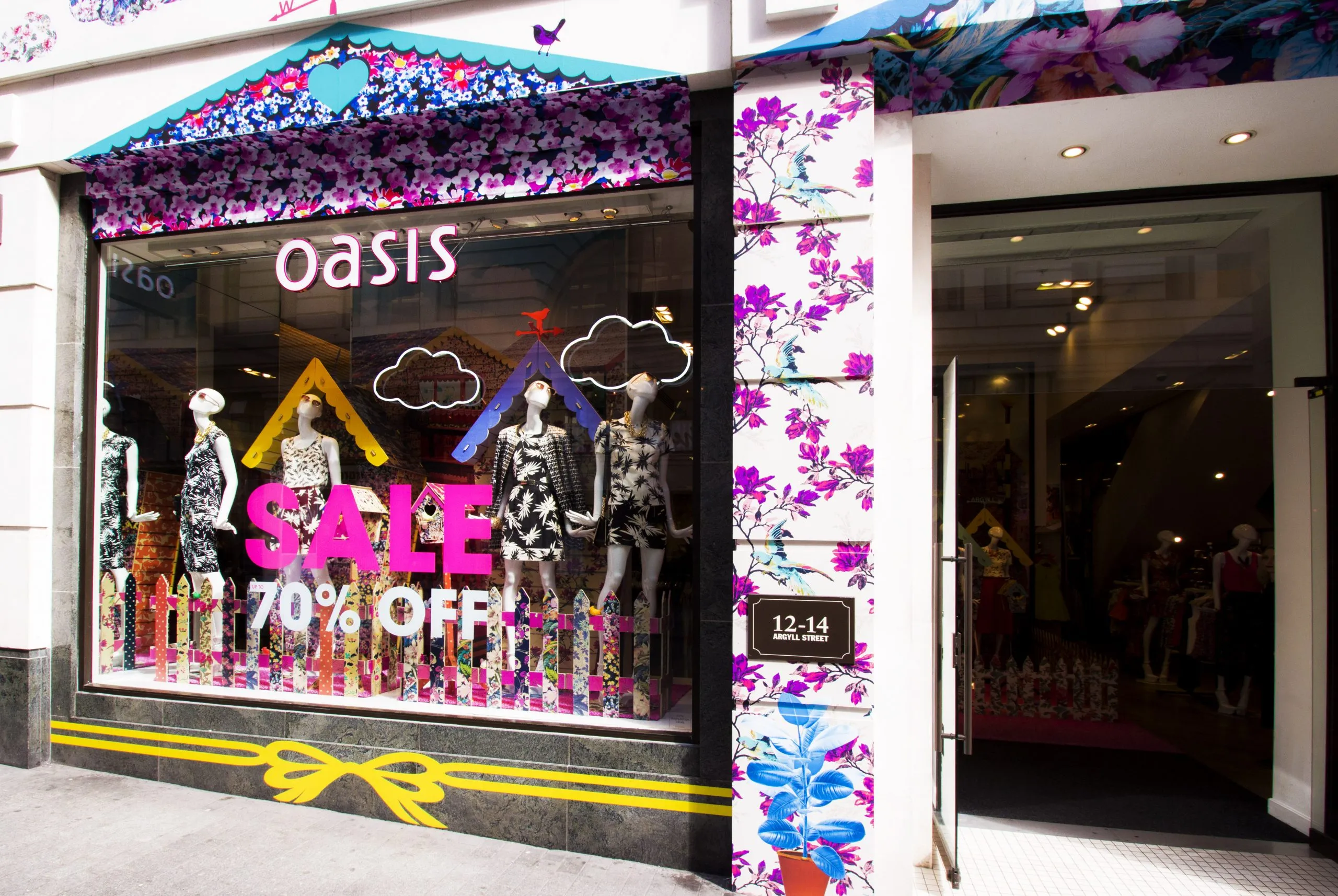
Oasis’ ability to adapt to changing market conditions has been crucial to their success. By continuously updating their technology and refining their marketing strategies, Oasis ensures they remain relevant and customer-centric. This adaptability has allowed them to respond quickly to customer needs and market trends, maintaining their competitive edge. For instance, during times of high demand or market shifts, Oasis has been able to swiftly implement new services and technologies to meet customer expectations. This strategic agility not only helps Oasis stay ahead of competitors but also ensures that it can provide the best possible shopping experience, regardless of external challenges.
In conclusion, Oasis’ omnichannel marketing strategy is a sophisticated blend of customer-centricity, technological innovation, data-driven decision-making, seamless channel integration, and strategic agility. These elements work together to create a compelling and consistent customer experience, setting Oasis apart as a leader in the fashion retail industry. By focusing on these key factors, Oasis not only meets but exceeds customer expectations, driving loyalty, engagement, and business growth.
Timberland
Timberland, a renowned outdoor footwear and apparel brand, has built a strong reputation for its high-quality products and commitment to sustainability. In recent years, Timberland has successfully implemented an omnichannel marketing strategy to create a seamless and engaging shopping experience for its customers. This case study explores how Timberland executed this strategy and the positive outcomes that followed
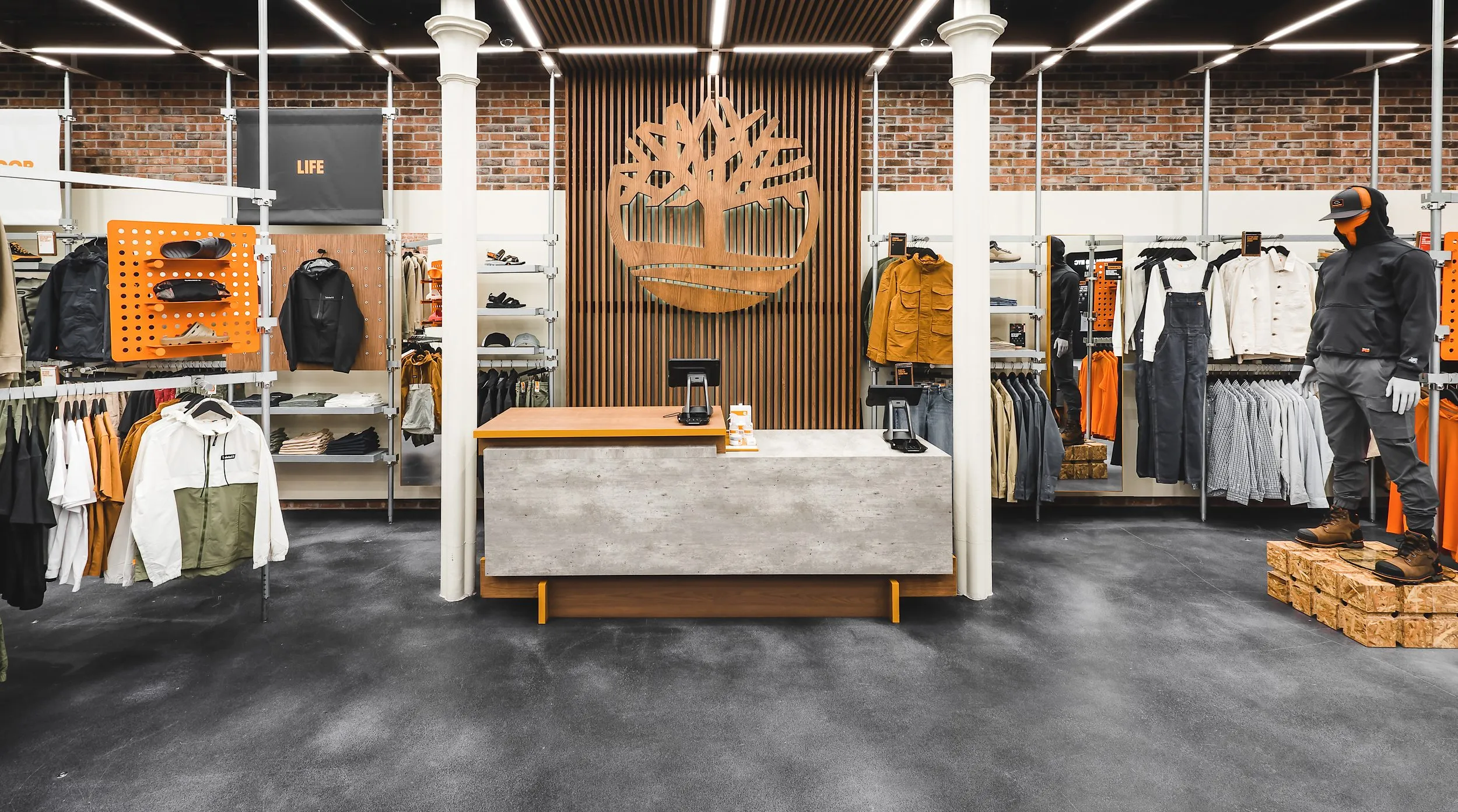
Founded in 1952, Timberland initially gained popularity with its iconic waterproof boots, which became a staple for outdoor enthusiasts and fashion-conscious consumers alike. Over the decades, Timberland expanded its product line to include a wide range of outdoor apparel and accessories. With the rise of digital technology and changing consumer preferences, Timberland recognized the need to innovate and adapt its marketing approach. The company decided to embrace an omnichannel strategy to provide a consistent and integrated customer experience across all touchpoints.
Timberland serves as one of the omnichannel marketing examples partly because it began with a deep understanding of the evolving retail landscape. Consumers increasingly expected a seamless shopping experience, whether they interacted with the brand online, through mobile devices, or in physical stores. Timberland aimed to meet these expectations by leveraging technology and data to create a unified and personalized shopping journey for its customers.
Timberland Omnichannel Marketing Strategy
- Integration of Digital and Physical Retail: Timberland recognized the importance of providing a seamless experience between their digital and physical stores. It implemented a technology called Near Field Communication (NFC) in its physical stores, allowing customers to use their smartphones to tap on products and receive detailed information, reviews, and availability both in-store and online. This created a bridge between their physical and digital presence.
- Personalization and Customer Experience: Timberland leveraged data analytics to personalize the shopping experience for their customers. By analyzing online and in-store behavior, they provided personalized recommendations and offers. For instance, customers received tailored emails and app notifications based on their browsing and purchase history. Timberland utilized customer data to send personalized emails and advertisements. By delivering relevant content, the brand increased engagement and conversion rates.
- Unified Commerce Platform: To ensure consistency across all channels, Timberland adopted a unified commerce platform. This platform integrated inventory management, order processing, and customer data across online and offline channels. As a result, customers could enjoy features like buying online and picking up in-store (BOPIS), returning online purchases in physical stores, and real-time inventory visibility.
- Social Media and Mobile Optimization: Understanding the growing influence of social media and mobile devices, Timberland optimized its marketing efforts for these platforms. They engaged with customers through interactive social media campaigns, influencer partnerships, and mobile-friendly websites and apps. This approach not only drove traffic but also enhanced brand loyalty and customer engagement.
- Enhanced Customer Service: Timberland improved its customer service by integrating chatbots and live chat support on its website and mobile app. This provided customers with immediate assistance, whether they were browsing online or shopping in-store. Additionally, they trained their in-store staff to use tablets for assisting customers with product information and availability, ensuring a consistent and informed shopping experience.
- Loyalty Programs and Rewards: The Timberland PRO loyalty program is designed to enhance customer retention and engagement. Members of the loyalty program receive personalized offers, early access to new products, and exclusive discounts. The program is integrated across all channels, allowing customers to earn and redeem points whether they shop online or in-store.
Outcomes
Timberland’s omnichannel strategy played a pivotal role in enhancing customer engagement and loyalty. By integrating NFC technology in their physical stores, Timberland allowed customers to interact with products in a more informative and engaging way. Shoppers could tap their smartphones on product tags to receive detailed information, including reviews, availability, and styling tips. This interactive experience bridged the gap between the digital and physical shopping environments, making the in-store experience more dynamic and informative.
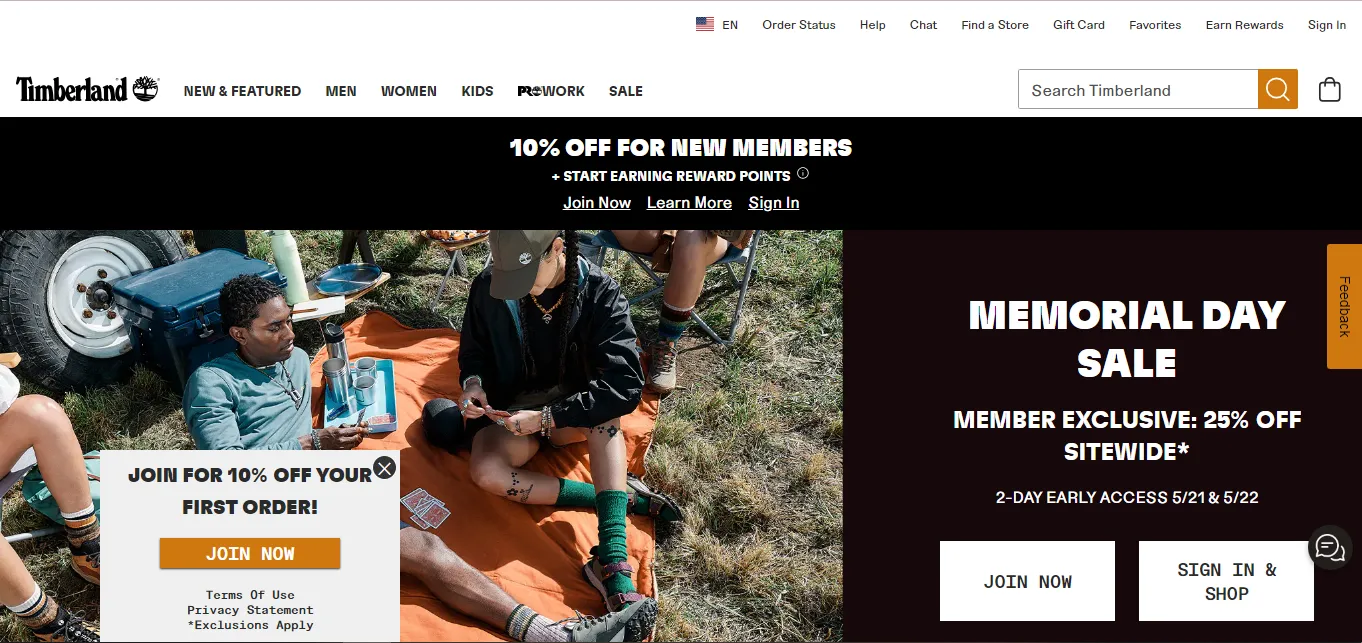
Furthermore, Timberland’s personalized marketing efforts significantly boosted customer satisfaction. They utilized data from both online and offline interactions to tailor their communications and offers to individual preferences and behaviors. For instance, customers received personalized email campaigns, app notifications, and recommendations based on their previous purchases and browsing history. This level of personalization made customers feel valued and understood, fostering a deeper emotional connection to the brand. The seamless transition between online and offline shopping experiences ensured that customers could enjoy a consistent and convenient journey, whether they were shopping from home or visiting a store. This holistic approach strengthened customer loyalty and encouraged repeat purchases.
The adoption of a unified commerce platform was instrumental in driving Timberland’s sales and revenue growth. This platform enabled a cohesive shopping experience across all channels, allowing customers to effortlessly switch between online and offline modes of purchase. The buy online, pick up in-store (BOPIS) option was particularly popular, providing customers with the flexibility to shop online and collect their purchases at a convenient location. This not only enhanced convenience but also increased foot traffic to physical stores. Once in-store, customers often made additional impulse purchases, further boosting sales.

Additionally, the option to return online purchases in physical stores simplified the returns process and encouraged more online shopping. This seamless integration of sales channels ensured that Timberland could capture sales opportunities at every touchpoint. Personalized product recommendations, driven by advanced data analytics, also contributed to increased sales. By offering products that matched customers’ preferences and needs, Timberland was able to drive higher conversion rates and average order values. Overall, the omnichannel approach maximized Timberland’s revenue potential by leveraging the strengths of both digital and physical retail.
Timberland’s consolidation of customer data across all channels provided a comprehensive view of consumer behavior. By integrating data from online interactions, in-store activities, and mobile app usage, Timberland gained valuable insights into customer preferences, shopping patterns, and purchasing triggers. This holistic understanding allowed them to make data-driven decisions and continuously refine their marketing strategies.
For example, Timberland could identify which products were popular among specific customer segments and tailor their inventory and promotions accordingly. They could also track the effectiveness of various marketing campaigns and adjust their tactics in real-time to optimize results. This data-driven approach extended to inventory management, enabling Timberland to better anticipate demand, reduce stockouts, and minimize excess inventory. By leveraging data insights, Timberland enhanced operational efficiency and ensured that customers could always find the products they wanted, leading to higher customer satisfaction and loyalty.

Timberland’s innovative use of technology and commitment to a seamless shopping experience significantly improved its brand perception. Customers viewed Timberland as a forward-thinking, customer-centric brand that prioritized convenience and personalization. The integration of NFC technology, personalized marketing, and unified commerce created a modern and engaging shopping environment that resonated with tech-savvy consumers.
Timberland’s efforts to provide a consistent and enjoyable experience across all channels also reinforced its reputation as a reliable and customer-focused brand. This positive brand perception attracted a broader customer base and differentiated Timberland from competitors. By consistently delivering on its brand promise and exceeding customer expectations, Timberland strengthened its market position and built long-term customer loyalty.
The integration of inventory management and order processing systems streamlined Timberland’s operations, resulting in significant efficiency gains. With a unified view of inventory across all channels, Timberland could optimize stock levels, reduce the risk of stockouts, and minimize excess inventory. This real-time inventory visibility allowed customers to see product availability both online and in-store, reducing frustration and enhancing the shopping experience.
Timberland’s ability to process orders more efficiently also improved delivery times and overall supply chain performance. The seamless coordination between online and offline operations ensured that customers received their orders promptly, whether they opted for home delivery or in-store pickup. Additionally, the streamlined returns process facilitated by the unified commerce platform reduced the complexity and cost associated with handling returns. Overall, these operational efficiencies contributed to a smoother, more responsive retail experience, benefiting both Timberland and its customers.
Evaluation and Analysis
Timberland’s success in omnichannel marketing demonstrates the importance of integrating various customer touchpoints to create a unified and personalized shopping experience. By leveraging technology, customer data, and innovative strategies, Timberland not only met the evolving needs of its customers but also gained a competitive edge in the fashion retail industry.
One of the key strengths of Timberland’s omnichannel marketing strategy was the seamless integration of its online and offline channels. This integration created a cohesive customer experience that aligned with the expectations of modern consumers, who often interact with brands through multiple touchpoints. By ensuring that the shopping experience was consistent whether online, on mobile devices, or in physical stores, Timberland successfully met and exceeded customer expectations, thereby enhancing customer satisfaction and loyalty.
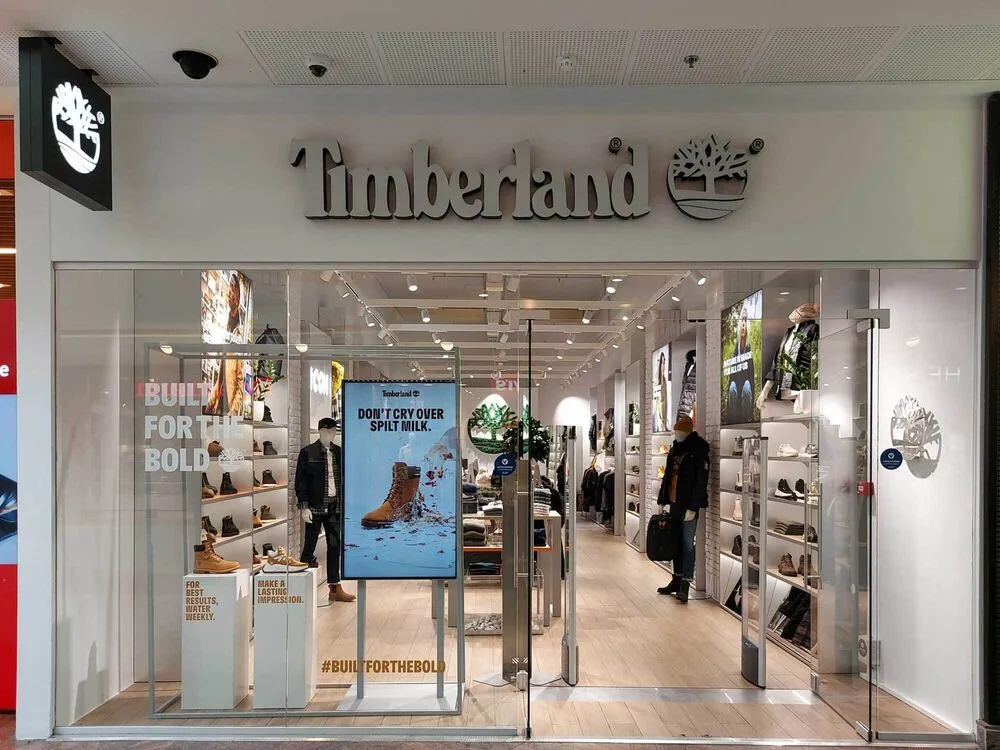
Another strength lay in Timberland’s use of personalization. By leveraging extensive customer data, Timberland was able to deliver highly personalized recommendations and targeted marketing campaigns. This approach not only enriched the customer experience by making it more relevant and engaging but also drove higher levels of customer engagement and increased sales. Personalized marketing efforts ensured that customers received offers and product suggestions that matched their preferences, encouraging repeat purchases and fostering brand loyalty.
Additionally, Timberland’s focus on mobile optimization significantly contributed to its success. Recognizing the growing importance of mobile devices in the shopping journey, Timberland developed a robust mobile app and implemented mobile payment solutions. These innovations made shopping more convenient and accessible for customers, allowing them to browse, purchase, and interact with the brand seamlessly from their mobile devices. The mobile app also provided personalized offers and features like barcode scanning, further enhancing the shopping experience.
Timberland places the customer at the center of their strategy. By understanding and anticipating customer needs, they have created a shopping experience that is both convenient and personalized. Every aspect of their omnichannel strategy is designed to enhance the customer journey, from interactive store technologies to personalized marketing messages. This customer-centric approach ensures that Timberland remains attuned to the desires and preferences of its clientele, fostering loyalty and satisfaction.
Timberland’s willingness to invest in cutting-edge technology has set them apart from competitors. Innovations like the Touchwall interactive displays and the comprehensive mobile app enhance the shopping experience and ensure that customers can access the full range of products, regardless of their location. This technological integration is key to creating a seamless omnichannel experience, ensuring that customers have access to the full range of products and services, regardless of their location.
In conclusion, Timberland’s omnichannel marketing strategy is a sophisticated blend of customer-centricity, technological innovation, data-driven decision-making, seamless channel integration, and strategic agility. These elements work together to create a compelling and consistent customer experience, setting Timberland apart as a leader in the outdoor and lifestyle retail industry. By focusing on these key factors, Timberland not only meets but exceeds customer expectations, driving loyalty, engagement, and business growth.
Ulta Beauty
Ulta Beauty, founded in 1990, has grown to become the largest beauty retailer in the United States. With over 1,200 stores across the country and a significant online presence, Ulta offers a vast array of beauty products ranging from cosmetics and skincare to hair care and fragrances. The company’s unique selling proposition lies in its combination of high-end and drugstore products, offering a one-stop shop for beauty enthusiasts. This diverse product offering, coupled with its innovative approach to customer experience, has positioned Ulta as a leader in the beauty retail industry.
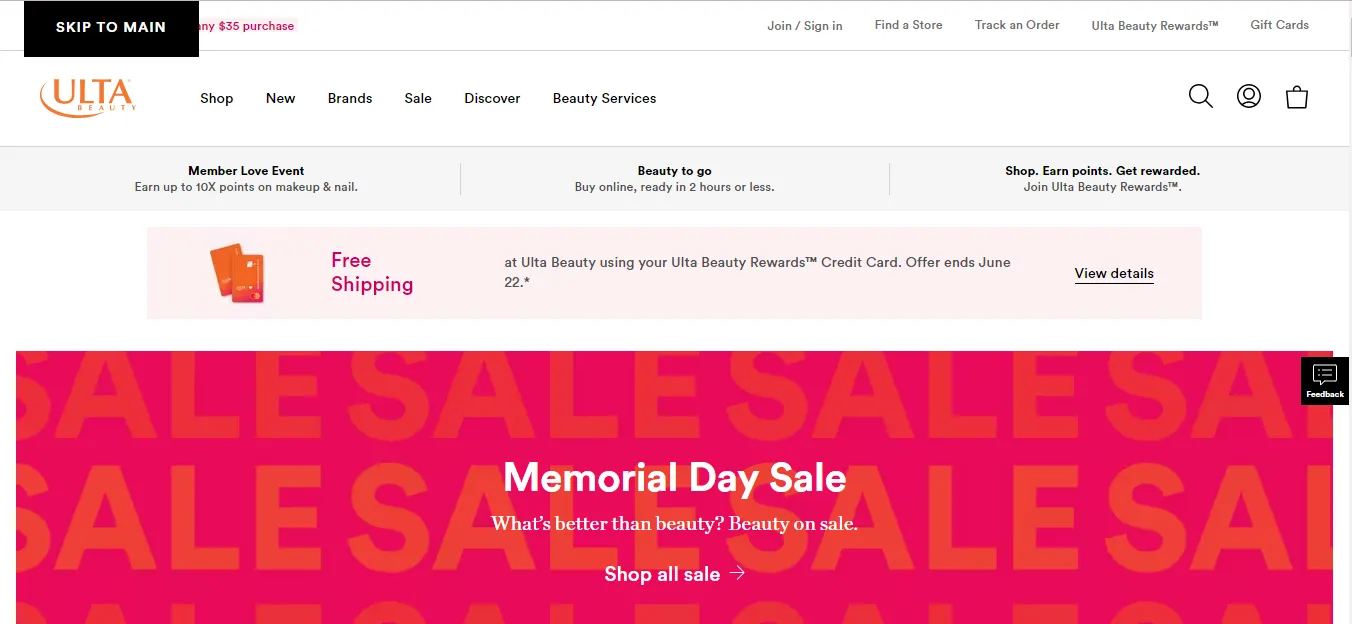
In the competitive world of beauty retail, staying ahead requires more than just a wide product range. It demands a seamless and integrated customer experience across all touchpoints—both online and offline. This is where Ulta’s omnichannel marketing strategy shines. By integrating their in-store and digital experiences, Ulta ensures that customers receive a consistent and personalized journey, no matter how they choose to shop.
Ulta Omnichannel Marketing Strategy
Ulta’s omnichannel marketing strategy stands out for several reasons, making it a benchmark for other retailers.
- Holistic Integration of Online and Offline Channels: Ulta has successfully blurred the lines between its online and offline presence, creating a truly seamless experience. Customers can effortlessly transition from browsing products online to purchasing them in-store or vice versa. This level of integration is rare and demonstrates Ulta’s commitment to providing a consistent and unified shopping experience.
- Innovative Use of Technology: Ulta leverages advanced technologies to enhance the shopping experience. Their GlamLab virtual try-on feature is a prime example, allowing customers to test products virtually using augmented reality. This not only improves the in-store experience but also encourages online purchases by reducing uncertainty about product suitability.
- Highly Personalized Customer Experience: Personalization is at the core of Ulta’s strategy. By utilizing data analytics, Ulta delivers highly personalized recommendations, offers, and marketing messages. This personalization extends across all channels, ensuring that customers receive relevant and tailored experiences whether they are shopping online or in-store.
- Robust Loyalty Program: The Ultamate Rewards program is one of the most successful loyalty programs in the retail industry, with over 33 million members. What sets it apart is its integration across all touchpoints. Customers earn and redeem points both online and in-store, and the program is seamlessly integrated with the Ulta Beauty app, providing a cohesive and rewarding shopping journey.
- Buy Online, Pick Up In-Store (BOPIS) Efficiency: Ulta’s BOPIS service is not just an added convenience but a strategic tool that drives traffic to physical stores. This option appeals to customers looking for quick access to products without waiting for shipping. The implementation is smooth and efficient, often allowing same-day pick-up, which enhances customer satisfaction and drives additional in-store sales.
- Engaging and Interactive Mobile App: The Ulta Beauty app is more than just a shopping tool; it’s a comprehensive beauty resource. The app includes features such as personalized recommendations, loyalty program integration, virtual try-on capabilities, and even beauty tutorials. This multifaceted approach makes the app an essential part of the customer’s beauty routine, driving higher engagement and repeat usage.
- Effective Social Media Integration: Ulta uses social media platforms not only for marketing but as an extension of its eCommerce capabilities. Customers can shop directly from Ulta’s social media posts, making the transition from browsing to purchasing seamless. This integration ensures that Ulta meets customers where they are, providing a frictionless shopping experience.
- Consistent and Engaging Customer Communication: Ulta excels in maintaining consistent and engaging communication with its customers. They use a mix of email, SMS, app notifications, and social media to keep customers informed about new products, special offers, and personalized recommendations. This omnichannel communication strategy ensures that customers are always in the loop and feel valued.
- In-Store Experience Enhancements: Ulta continuously innovates its in-store experience to complement its digital efforts. This includes offering beauty services such as haircuts, skincare treatments, and makeup applications. These services not only drive foot traffic but also provide a tactile experience that digital channels cannot replicate, strengthening customer loyalty.
- Responsive and Adaptable Strategy: Ulta’s ability to quickly adapt to changing market conditions is a testament to its strategic agility. During the COVID-19 pandemic, for instance, they swiftly ramped up their BOPIS and curbside pickup options to meet the surge in demand for contactless shopping. This responsiveness ensures that Ulta remains relevant and customer-centric, even in challenging times.
Outcomes
Ulta’s omnichannel marketing strategy has yielded impressive results, demonstrating the effectiveness of its comprehensive approach to integrating online and offline channels.
The seamless integration of Ulta’s online and offline channels has driven significant sales growth. In 2020, despite the challenges posed by the COVID-19 pandemic, Ulta reported a remarkable increase in eCommerce sales, with digital sales growing by 90%. This growth underscores the importance of having a robust online presence that complements physical stores. By ensuring that customers can access products through multiple channels, Ulta has effectively captured a larger share of the market, translating into substantial revenue gains.
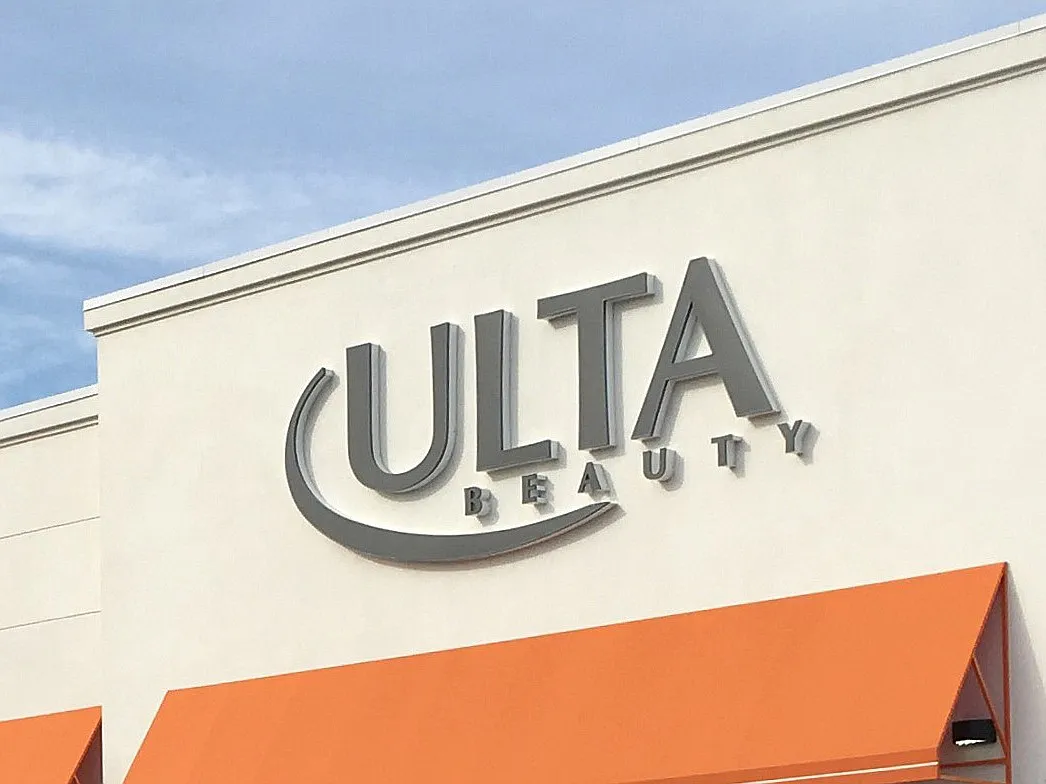
The Ultamate Rewards program has been a cornerstone of Ulta’s strategy, playing a crucial role in building a loyal customer base. Members of this program tend to spend more and shop more frequently, driven by the incentives and rewards offered. The integration of the loyalty program with Ulta’s app and online platform ensures that members can easily track their points and benefits, creating a cohesive and rewarding shopping experience. This seamless integration fosters deeper engagement and loyalty, as customers feel valued and appreciated across all touchpoints.
Ulta’s focus on creating a unified customer journey has significantly enhanced customer satisfaction. By enabling customers to transition effortlessly between online and offline shopping, Ulta has removed many of the common pain points associated with retail shopping. Personalized recommendations and services, driven by data analytics, further enhance the shopping experience by making it more relevant and enjoyable for each customer. This customer-centric approach has not only improved satisfaction but also increased customer retention and repeat business
Ulta’s omnichannel approach has successfully expanded its customer base by catering to diverse shopping preferences. Whether customers prefer to shop in-store, online, or through a combination of both, Ulta provides a consistent and personalized experience. This flexibility has attracted a broad range of customers, from those who enjoy the tactile experience of in-store shopping to those who prefer the convenience of online purchases. By offering a diverse range of products and personalized shopping experiences, Ulta has broadened its appeal and captured new market segments.
In summary, Ulta’s omnichannel marketing strategy has led to increased sales and revenue, enhanced customer loyalty, improved customer experience, and expanded customer base. These outcomes highlight the effectiveness of a well-integrated omnichannel approach in meeting customer needs and driving business success.
Evaluation and analysis
Ulta’s success in omnichannel marketing can be attributed to several key factors, each playing a vital role in creating a seamless and engaging customer experience.
Ulta places the customer at the heart of its strategy, which is evident in every aspect of its operations. By deeply understanding and anticipating customer needs, Ulta has crafted a shopping experience that is both convenient and personalized. This customer-centric approach ensures that every interaction, whether online or in-store, is designed to meet and exceed customer expectations. For instance, the personalized recommendations and loyalty rewards offered through the Ultamate Rewards program show a commitment to making each customer feel valued. By continuously seeking feedback and adapting to customer preferences, Ulta has built strong, lasting relationships with its clientele.
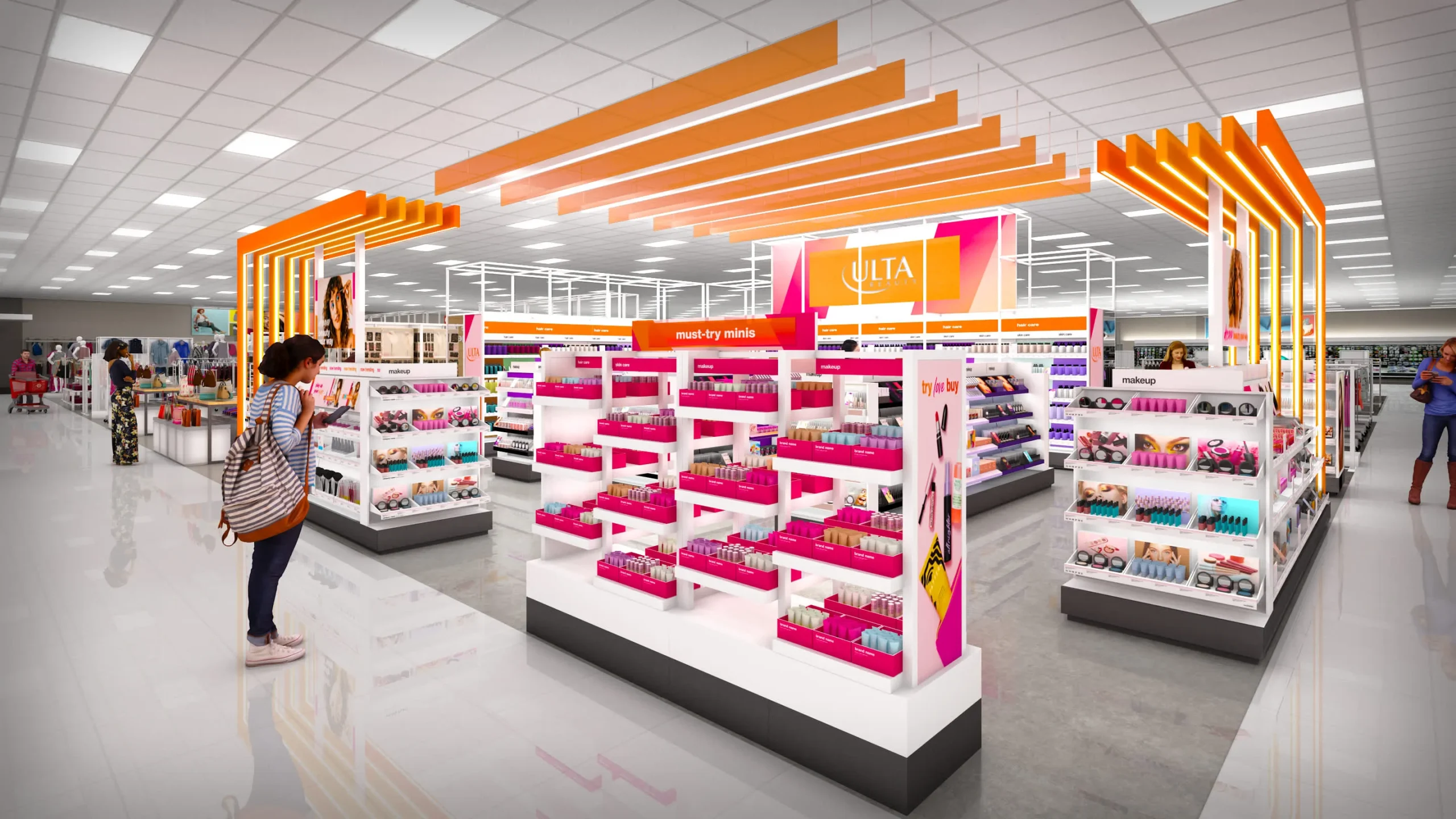
Ulta’s willingness to invest in cutting-edge technology has significantly set them apart from competitors. Tools like the GlamLab virtual try-on feature and the robust Ulta Beauty app are prime examples of how technology can enhance the shopping experience. The GlamLab feature uses augmented reality to allow customers to try on makeup virtually, reducing the uncertainty of online purchases and making the shopping process more interactive and fun. Similarly, the Ulta Beauty app integrates shopping, loyalty rewards, and personalized recommendations in one platform, driving higher engagement and customer satisfaction. These technological advancements not only improve the customer experience but also position Ulta as a forward-thinking leader in the beauty industry.
Ulta leverages data analytics to inform its marketing strategies, ensuring that every decision is backed by customer insights. By analyzing customer behavior and preferences, Ulta can deliver targeted and relevant marketing messages, increasing the likelihood of conversion. This data-driven approach enables Ulta to identify trends, personalize communications, and optimize its marketing efforts for better results. For example, personalized emails and app notifications based on past purchases and browsing history make customers feel understood and catered to, enhancing their overall shopping experience.
The seamless integration of Ulta’s online and offline channels ensures that customers have a consistent experience, regardless of how they choose to shop. This integration is crucial for creating a true omnichannel experience, where the boundaries between physical and digital stores blur. Features like real-time inventory checks on the website, the ability to buy online and pick up in-store (BOPIS), and the consistent application of loyalty rewards across all channels exemplify this integration. By ensuring that customers can transition smoothly between different shopping modes, Ulta enhances convenience and accessibility, making it easier for customers to shop on its terms.
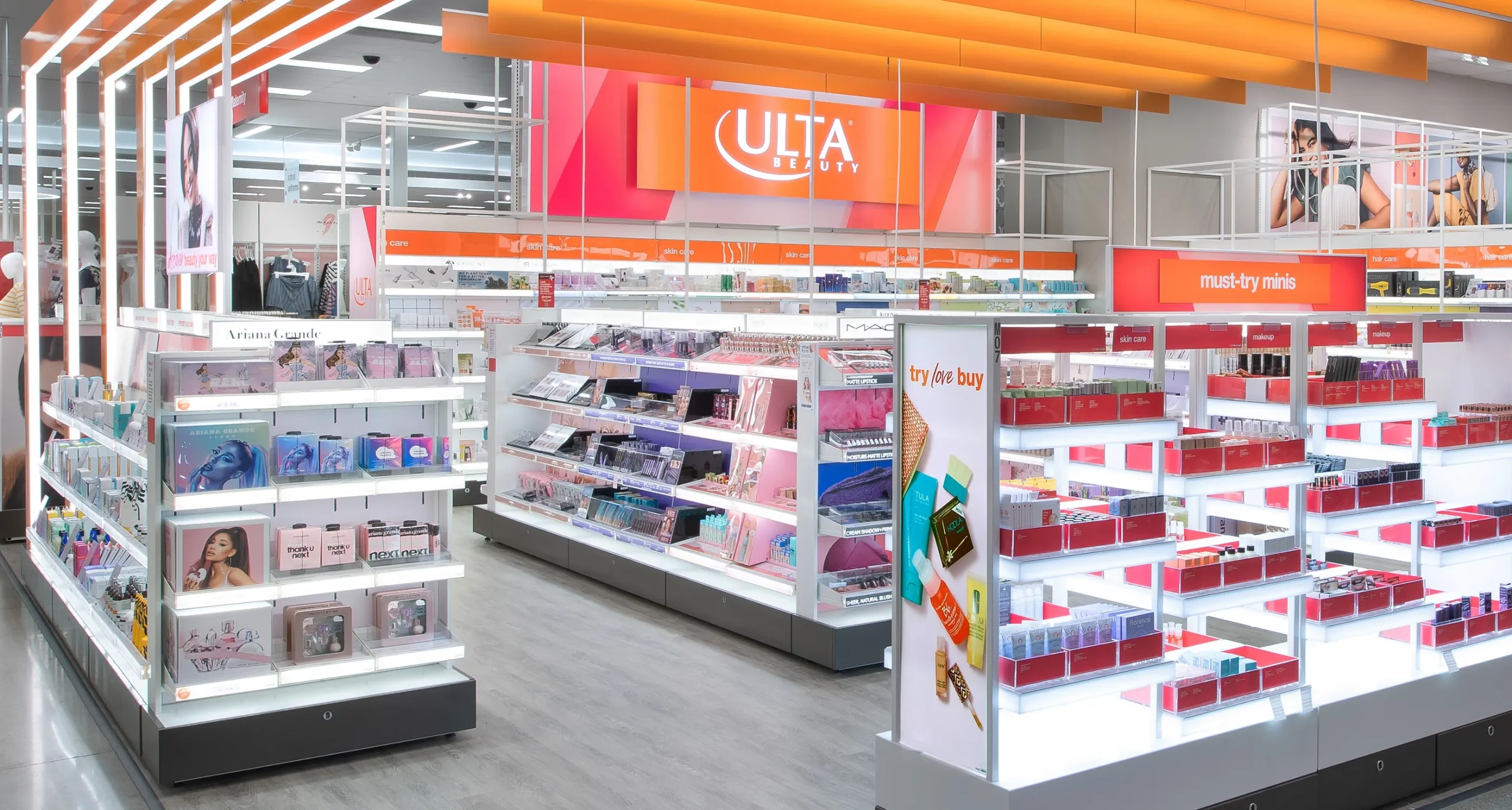
Ulta’s ability to adapt to changing market conditions has been a critical factor in their success. For instance, their swift implementation of BOPIS during the COVID-19 pandemic catered to the increased demand for contactless shopping options. This quick response not only met immediate customer needs but also highlighted Ulta’s commitment to safety and convenience. Ulta’s agility extends beyond crisis response; they continually update their technology, refine their marketing strategies, and expand their product offerings to stay ahead of industry trends and customer expectations. This adaptability ensures that Ulta remains relevant and competitive in a rapidly evolving retail landscape.
In conclusion, Ulta’s omnichannel marketing strategy is a sophisticated blend of customer-centricity, technological innovation, data-driven decision-making, seamless channel integration, and strategic agility. These elements work together to create a compelling and consistent customer experience, setting Ulta apart as a leader in the beauty retail industry. By focusing on these key factors, Ulta not only meets but exceeds customer expectations, driving loyalty, engagement, and business growth.
Macy’s
Macy’s, founded in 1858 by Rowland Hussey Macy, has grown from a small dry goods store in New York City to one of the largest and most iconic department store chains in the United States. With over 550 stores across the country and a robust online presence, Macy’s offers a wide range of products, including clothing, accessories, beauty products, home goods, and more. Known for its flagship store in Herald Square, New York, Macy’s has long been a staple in American retail, celebrated for its grand holiday displays and annual Thanksgiving Day Parade.

In an era where the retail landscape is rapidly evolving due to digital transformation, Macy’s has embraced an omnichannel marketing strategy to stay competitive and relevant. By integrating its physical and digital channels, Macy’s aims to provide a seamless and engaging shopping experience that meets the expectations of modern consumers. This strategy not only enhances customer satisfaction but also drives sales and loyalty by ensuring a consistent experience across all touchpoints.
Macy’s Omnichannel Marketing Strategy
Macy’s omnichannel marketing strategy is distinguished by several unique and special elements that set them apart from other retailers.
- Innovative Use of Technology: Macy’s leverages advanced technologies to enhance the shopping experience. Macy’s has enhanced their in-store experience by integrating technology. Interactive kiosks and digital displays provide customers with additional product information, recommendations, and the ability to order online if a product is not available in-store. These technologies ensure that customers have access to the full range of Macy’s products, regardless of their location. Furthermore, Macy’s has implemented virtual reality (VR) and augmented reality (AR) experiences to create immersive shopping environments that blend physical and digital elements.
- Robust Loyalty Program: The Macy’s Star Rewards program is a cornerstone of its customer retention strategy. The program’s integration with digital platforms ensures that customers can easily access their rewards and receive personalized offers. The tiered membership structure provides an incentive for customers to increase their spending to reach higher reward levels, driving loyalty and repeat business.
- Commitment to Sustainability: Macy’s has also incorporated sustainability into their omnichannel strategy. They highlight eco-friendly products and practices through their digital platforms, engaging customers who prioritize sustainability. This commitment not only differentiates Macy’s from competitors but also aligns with the values of a growing segment of consumers.
- Flexible Fulfillment Options: Macy’s offers multiple fulfillment options to cater to different customer preferences. In addition to BOPIS and curbside pickup, they provide ship-to-store and same-day delivery services. These options give customers the flexibility to choose the most convenient way to receive their purchases, enhancing the overall shopping experience.
Outcomes
Macy’s integration of online and offline channels has significantly boosted sales and revenue. Key components such as the Buy Online, Pick Up In-Store (BOPIS) option and the mobile app have played crucial roles in driving this growth. BOPIS, in particular, has increased foot traffic to physical stores, providing opportunities for additional in-store purchases and reducing shipping costs. The convenience of the mobile app, with features like in-app purchases and personalized recommendations, has also contributed to higher conversion rates and increased average order values.
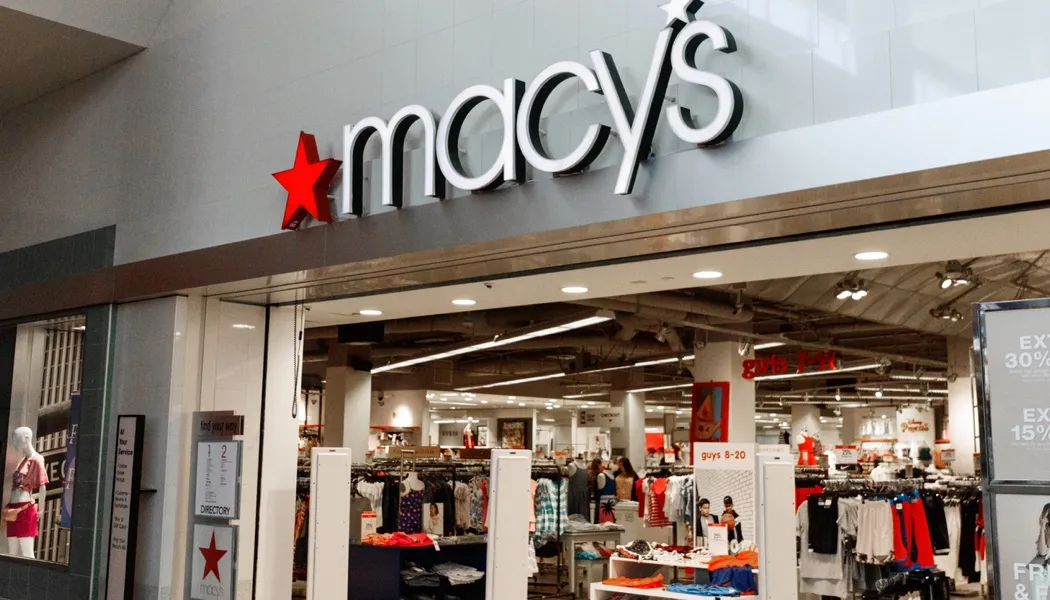
Macy’s omnichannel strategy has greatly improved the overall customer experience. The seamless integration of digital and physical touchpoints offers customers flexibility and convenience, leading to higher satisfaction and loyalty. The BOPIS option allows customers to shop online and pick up their purchases at a nearby store, meeting the growing demand for fast and flexible fulfillment options. The mobile app enhances the shopping experience with its user-friendly interface, augmented reality (AR) features for virtual try-ons, and integration with Macy’s rewards program, making the shopping journey more engaging and personalized.
Investments in in-store technology and data analytics have streamlined Macy’s operations, leading to improved efficiency and cost savings. In-store technologies such as interactive kiosks, mobile point-of-sale (POS) systems, and digital price tags have optimized the shopping process, reduced checkout times, and ensured accurate pricing and promotions. Data analytics have enabled Macy’s to personalize marketing efforts effectively, delivering targeted promotions and product recommendations based on customer behavior and preferences. This data-driven approach not only enhances customer engagement but also improves inventory management and reduces operational expenses.
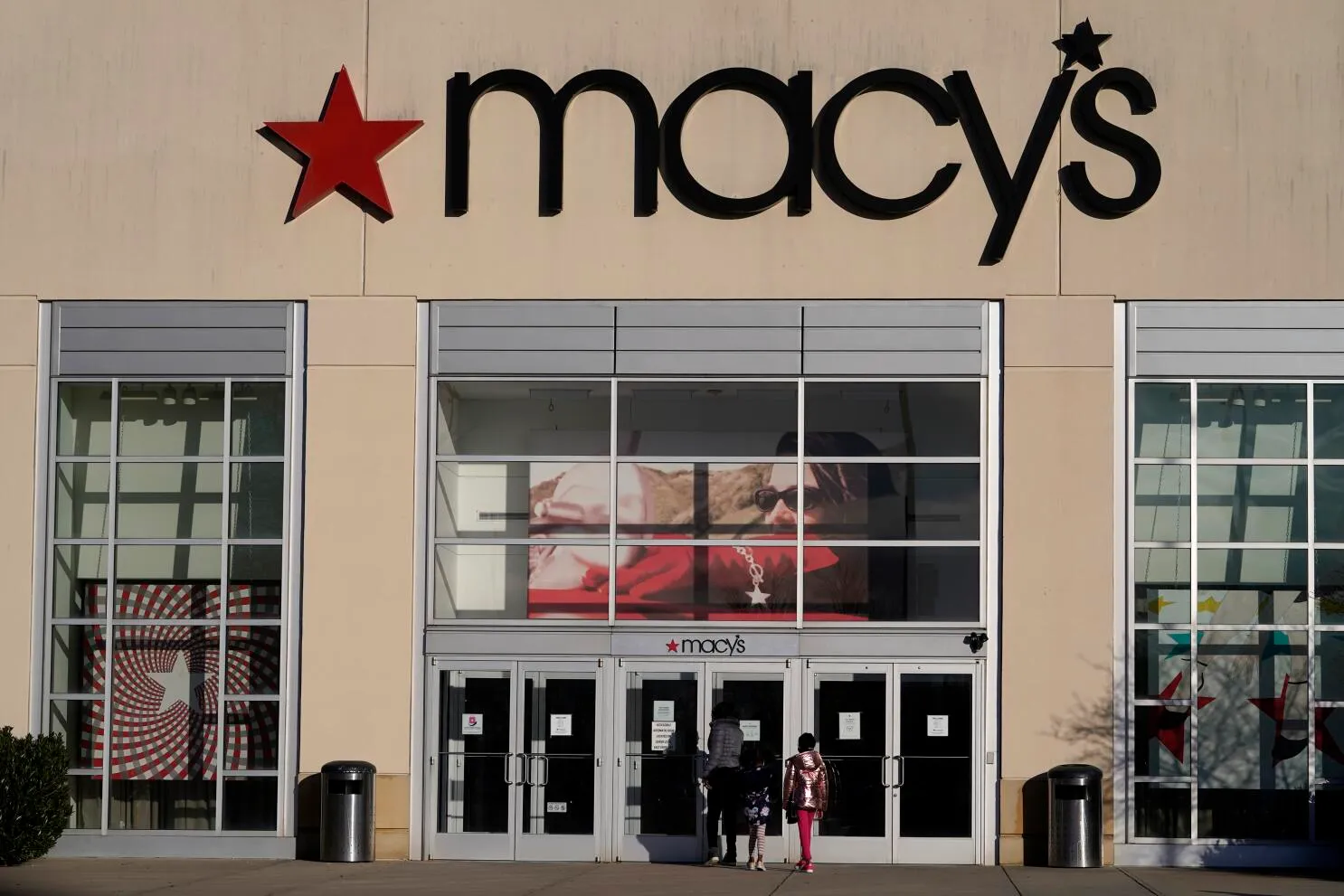
Personalized marketing efforts, powered by data analytics, have led to higher customer engagement and retention. By analyzing customer behavior and purchase history, Macy’s delivers tailored promotions and content through email, social media, and their website. This personalization resonates more with customers, resulting in increased loyalty and repeat purchases. The mobile app’s personalized features, such as recommendations and rewards integration, further incentivize customers to engage with the brand regularly.
Macy’s use of social media and influencer marketing has expanded its reach and increased brand awareness, particularly among younger demographics. Engaging content and influencer collaborations have driven traffic to both online and physical stores, attracting new customers and enhancing the brand’s visibility. Social media campaigns and influencer endorsements have effectively promoted products and seasonal collections, contributing to Macy’s overall marketing success.
Evaluation and Analysis
Macy’s success in omnichannel marketing can be attributed to several key factors that create a cohesive and customer-centric shopping experience.
At the heart of Macy’s strategy is a deep commitment to its customers. By proactively identifying and addressing customer needs, Macy’s has crafted a shopping experience that is both convenient and highly personalized. Each component of their omnichannel approach, from tailored marketing messages to varied fulfillment options, is designed to optimize the customer journey. This focus on the customer ensures Macy’s consistently aligns with shopper preferences, fostering greater loyalty and satisfaction.
Macy’s dedication to leveraging advanced technology has distinctly set them apart. The introduction of interactive kiosks, the use of RFID technology, and the development of a robust mobile app all contribute to an enhanced shopping experience. These technological innovations ensure that customers have access to Macy’s full product range, whether they are shopping online or in-store. This comprehensive tech integration is crucial for delivering a seamless omnichannel experience.
Utilizing data analytics is central to Macy’s marketing strategy. By closely examining customer behavior and preferences, Macy’s can deliver targeted and relevant marketing communications. Personalized shopping experiences are crafted through these insights, significantly increasing conversion rates. For instance, tailored emails and app notifications based on individual shopping patterns help maintain customer engagement and drive repeat purchases. This data-centric approach not only boosts sales but also strengthens customer loyalty by making shoppers feel understood and valued.
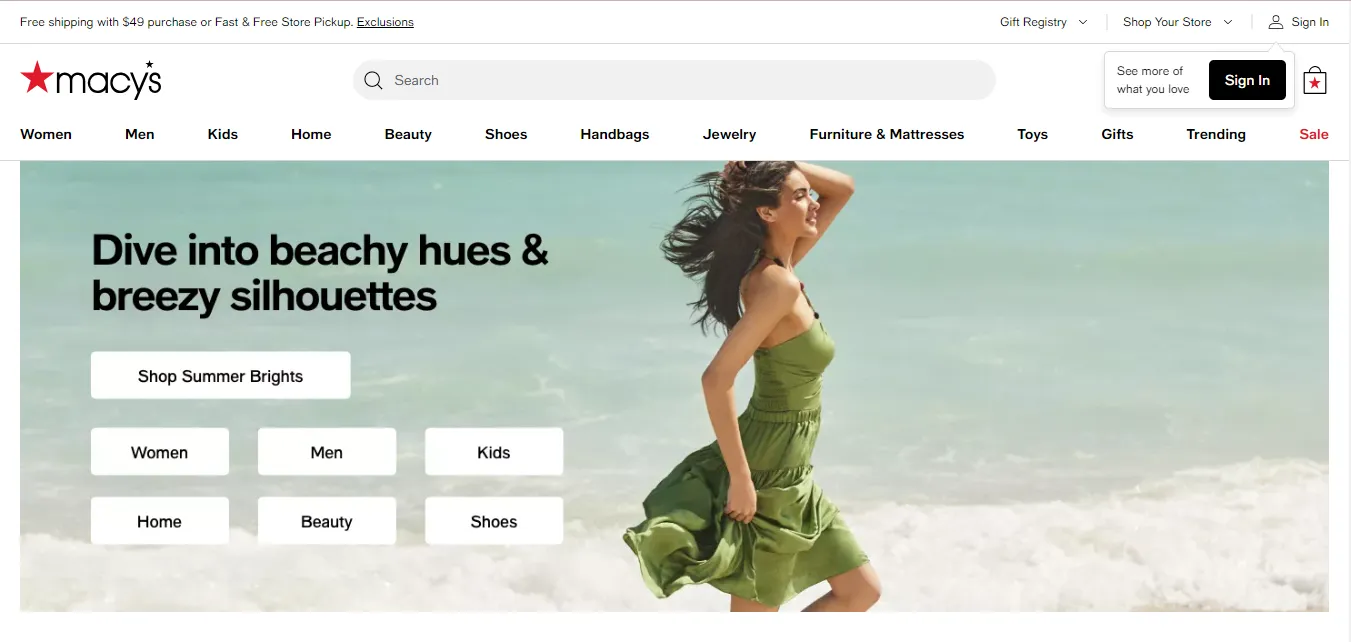
Macy’s ensures a uniform customer experience by integrating its online and offline channels effectively. Services such as Buy Online, Pick Up In-Store (BOPIS) and curbside pickup are prime examples of this integration, offering customers multiple ways to complete their purchases conveniently. This seamless integration not only improves customer convenience but also promotes additional sales by providing immediate solutions to customer needs.
Macy’s ability to swiftly adapt to evolving market conditions has been instrumental to their success. By continually updating their technology and refining their marketing strategies, Macy’s remains relevant and customer-focused. This flexibility enables Macy’s to promptly respond to customer demands and market trends, maintaining a competitive edge. For example, during the COVID-19 pandemic, Macy’s quickly expanded their curbside pickup and online services to meet the surge in demand for contactless shopping options. This swift response not only met urgent customer needs but also underscored Macy’s dedication to safety and convenience.
In summary, Macy’s omnichannel marketing strategy excels through a blend of customer-centric practices, advanced technological integration, data-driven marketing, seamless channel integration, and strategic agility. These factors collectively create a compelling and consistent customer experience, solidifying Macy’s position as a leader in the retail industry. By emphasizing these key elements, Macy’s consistently exceeds customer expectations, driving enhanced loyalty, engagement, and business growth.
The Home Depot
Home Depot, founded in 1978, is the largest home improvement retailer in the United States, offering a vast array of products ranging from tools and construction materials to appliances and garden supplies. With over 2,200 stores across North America, Home Depot has built a reputation for providing quality products and exceptional customer service. As consumer shopping habits evolved with the advent of digital technology, Home Depot recognized the need to integrate their online and offline channels to provide a seamless shopping experience. This led to the development and implementation of a robust omnichannel marketing strategy aimed at meeting the diverse needs of their customers.
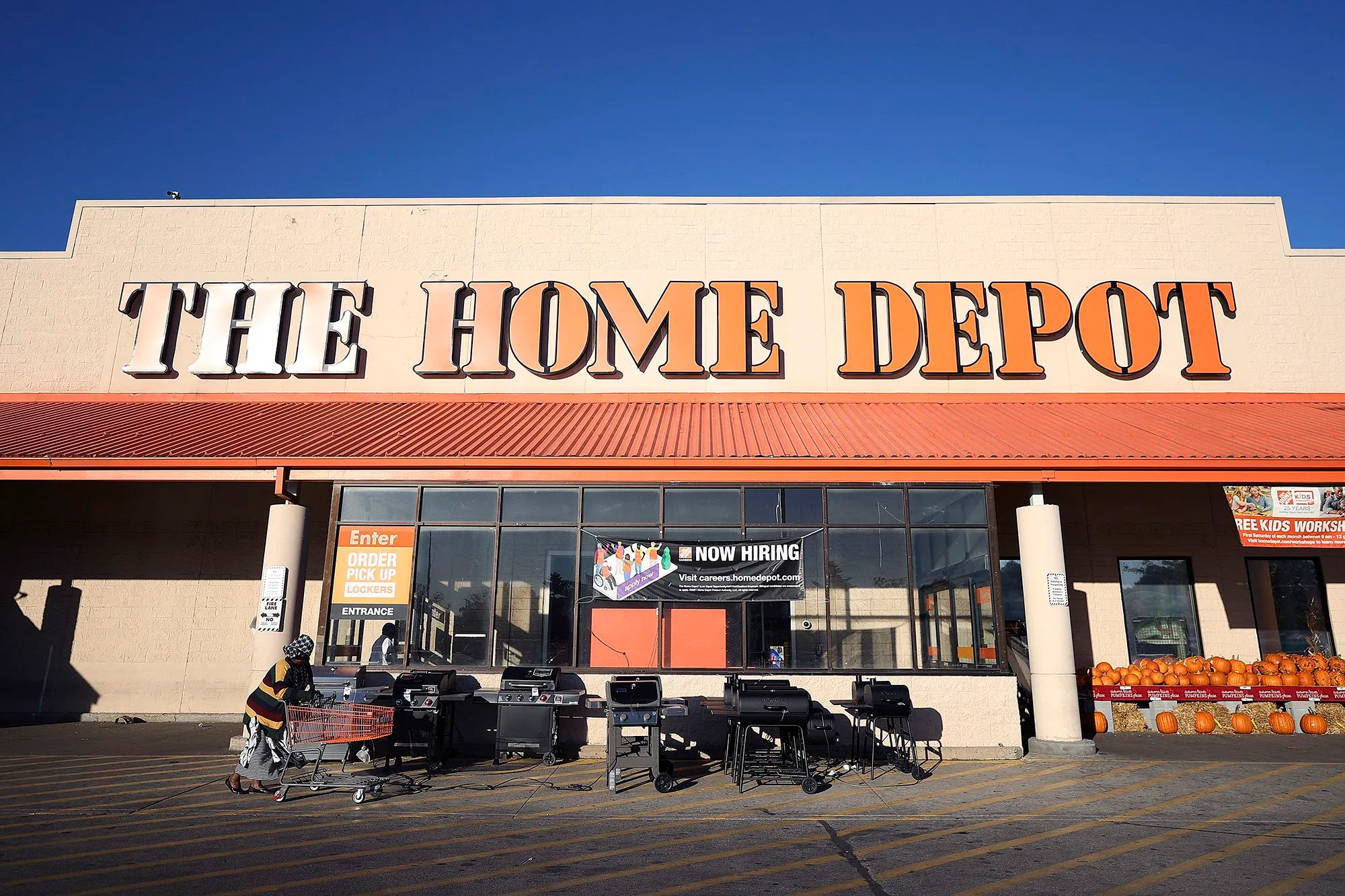
In today’s competitive retail environment, Home Depot’s commitment to creating an integrated and personalized shopping experience has set them apart. Their omnichannel strategy leverages both digital and physical touchpoints, ensuring that customers receive consistent service and engagement, regardless of how they choose to shop. By focusing on convenience, personalization, and technological innovation, Home Depot has successfully enhanced the customer journey, driving both loyalty and growth.
Home Depot Omnichannel Marketing Strategy
- Seamless Integration of Online and Offline Channels: Home Depot has effectively synchronized its online and offline channels to create a cohesive shopping experience. This integration is evident in their inventory management system, which allows customers to check product availability online and see what’s in stock at their local store. This real-time information helps customers make informed decisions and reduces the likelihood of out-of-stock disappointments. Additionally, customers can purchase products online and choose from various fulfillment options, such as home delivery, in-store pickup, or curbside pickup.
- Buy Online, Pick Up In-Store (BOPIS) and Curbside Pickup: Home Depot’s BOPIS and curbside pickup services are key components of their omnichannel strategy. These services allow customers to shop online and pick up their orders at a nearby store, often on the same day. This approach caters to the growing demand for convenience and quick access to products. During the COVID-19 pandemic, Home Depot expanded its curbside pickup service to accommodate the increased need for contactless shopping options. This flexibility not only meets customer needs but also drives traffic to physical stores, where additional purchases are often made.
- Enhanced Mobile App and Online Platform: The Home Depot mobile app and website are central to their omnichannel strategy, providing a seamless and user-friendly shopping experience. The app includes features such as product search, inventory checks, and personalized recommendations. Customers can also use the app to find store locations, access project guides, and manage their Home Depot accounts. The integration of these features ensures that customers have all the tools they need to plan and execute their home improvement projects efficiently.
- Personalized Marketing and Customer Engagement: Home Depot leverages data analytics to deliver personalized marketing messages across various channels. By analyzing customer behavior and preferences, they create targeted email campaigns, mobile app notifications, and social media ads that resonate with individual customers. Personalized recommendations on the website and app help guide customers to products that suit their needs, enhancing the shopping experience and increasing the likelihood of conversion.
- Pro Xtra Loyalty Program: Home Depot’s Pro Xtra loyalty program is designed to cater to professional contractors and frequent shoppers. This program offers exclusive benefits such as bulk pricing, purchase tracking, and rewards for repeat purchases. The integration of the Pro Xtra program with Home Depot’s digital platforms ensures that members can easily access their benefits, whether shopping online or in-store. This loyalty program not only fosters customer loyalty but also encourages repeat business from high-value customers.
- In-Store Technology and Services: Home Depot has invested in various in-store technologies to enhance the customer experience. For example, their in-store kiosks allow customers to access the full online catalog, check product availability, and place orders. Additionally, Home Depot offers services such as tool rental and DIY workshops, which provide customers with hands-on assistance and guidance for their projects. These in-store services complement the digital experience, creating a comprehensive and engaging shopping journey.
- Flexible Fulfillment Options: Home Depot provides multiple fulfillment options to meet different customer needs. In addition to BOPIS and curbside pickup, they offer ship-to-home and ship-to-store services. These options give customers the flexibility to choose the most convenient way to receive their purchases, enhancing the overall shopping experience. The efficient fulfillment process ensures that orders are processed quickly and accurately, reducing wait times and increasing customer satisfaction.
Outcomes
Home Depot’s omnichannel marketing strategy has delivered impressive results, demonstrating the effectiveness of its integrated approach.
The seamless integration of online and offline channels has driven significant sales growth. Home Depot’s BOPIS and curbside pickup services, in particular, have contributed to higher conversion rates and increased revenue. The ability to provide a consistent shopping experience across all touchpoints has attracted a broader customer base and encouraged repeat purchases.
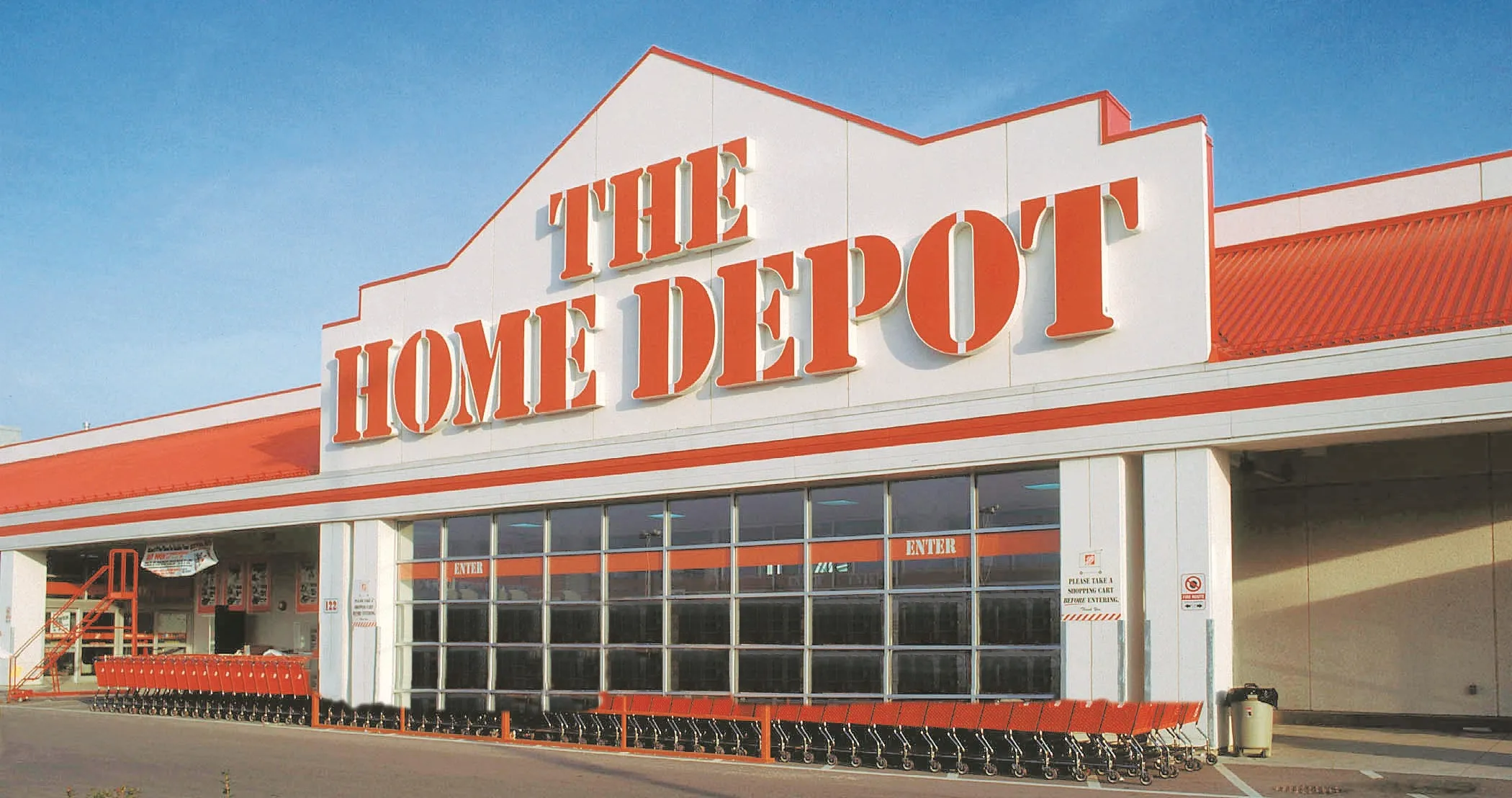
Home Depot’s personalized marketing and robust loyalty program have fostered strong customer loyalty. The integration of the Pro Xtra program with digital platforms ensures that members feel valued and appreciated, regardless of how they shop. This consistent and rewarding experience has led to higher customer retention and repeat business.
By offering a unified shopping experience, Home Depot has significantly improved customer satisfaction. The convenience of features like BOPIS, personalized recommendations, and innovative in-store technologies have enhanced the overall shopping experience. Customers appreciate the ability to seamlessly transition between online and offline shopping, creating a more enjoyable and efficient journey.
Home Depot’s omnichannel approach has successfully expanded its customer base by catering to diverse shopping preferences. Whether customers prefer to shop in-store, online, or through mobile devices, Home Depot provides a consistent and personalized experience. This flexibility has attracted a diverse range of customers, from DIY enthusiasts to professional contractors.
Evaluation and Analysis
Home Depot’s success in omnichannel marketing can be attributed to several key factors, each contributing to its seamless and engaging customer experience.
At the core of Home Depot’s strategy is a deep commitment to understanding and addressing customer needs. By placing the customer at the center of their approach, Home Depot has created a shopping experience that is both convenient and highly personalized. Each component of their omnichannel strategy, from tailored marketing messages to flexible fulfillment options, is designed to optimize the customer journey. This focus on the customer ensures Home Depot consistently aligns with shopper preferences, fostering greater loyalty and satisfaction.
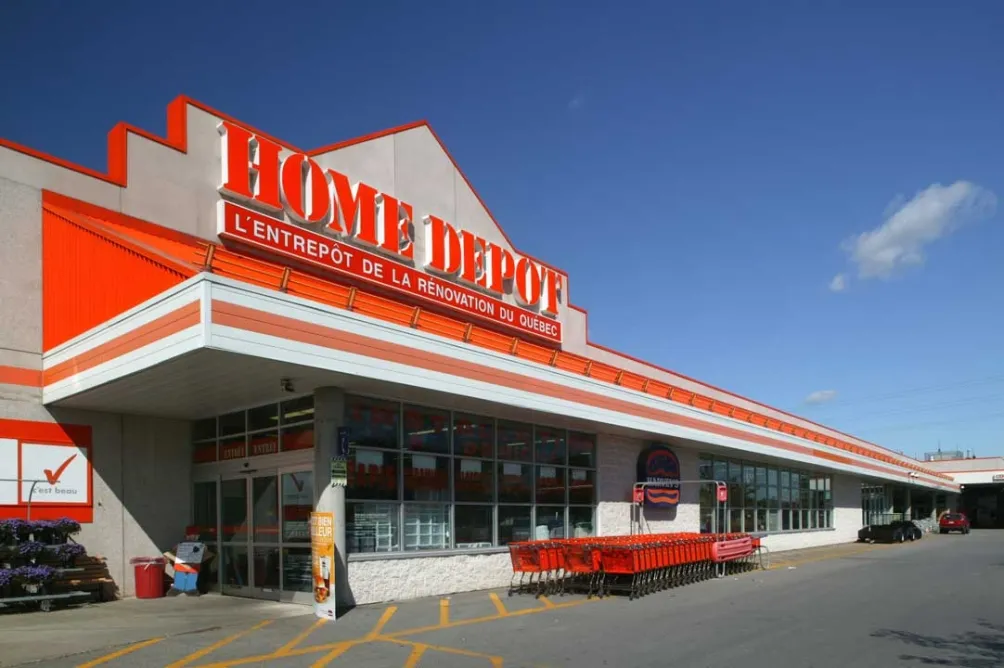
Home Depot’s dedication to leveraging advanced technology has distinctly set them apart. The introduction of in-store kiosks, the use of data analytics for personalized marketing, and the development of a robust mobile app all contribute to an enhanced shopping experience. These technological innovations ensure that customers have access to Home Depot’s full product range, whether they are shopping online or in-store. This comprehensive tech integration is crucial for delivering a seamless omnichannel experience.
Utilizing data analytics is central to Home Depot’s marketing strategy. By closely examining customer behavior and preferences, Home Depot can deliver targeted and relevant marketing communications. Personalized shopping experiences are crafted through these insights, significantly increasing conversion rates. For instance, tailored emails and app notifications based on individual shopping patterns help maintain customer engagement and drive repeat purchases. This data-centric approach not only boosts sales but also strengthens customer loyalty by making shoppers feel understood and valued.
Home Depot ensures a uniform customer experience by integrating its online and offline channels effectively. Services such as BOPIS and curbside pickup are prime examples of this integration, offering customers multiple ways to complete their purchases conveniently. This seamless integration not only improves customer convenience but also promotes additional sales by providing immediate solutions to customer needs.
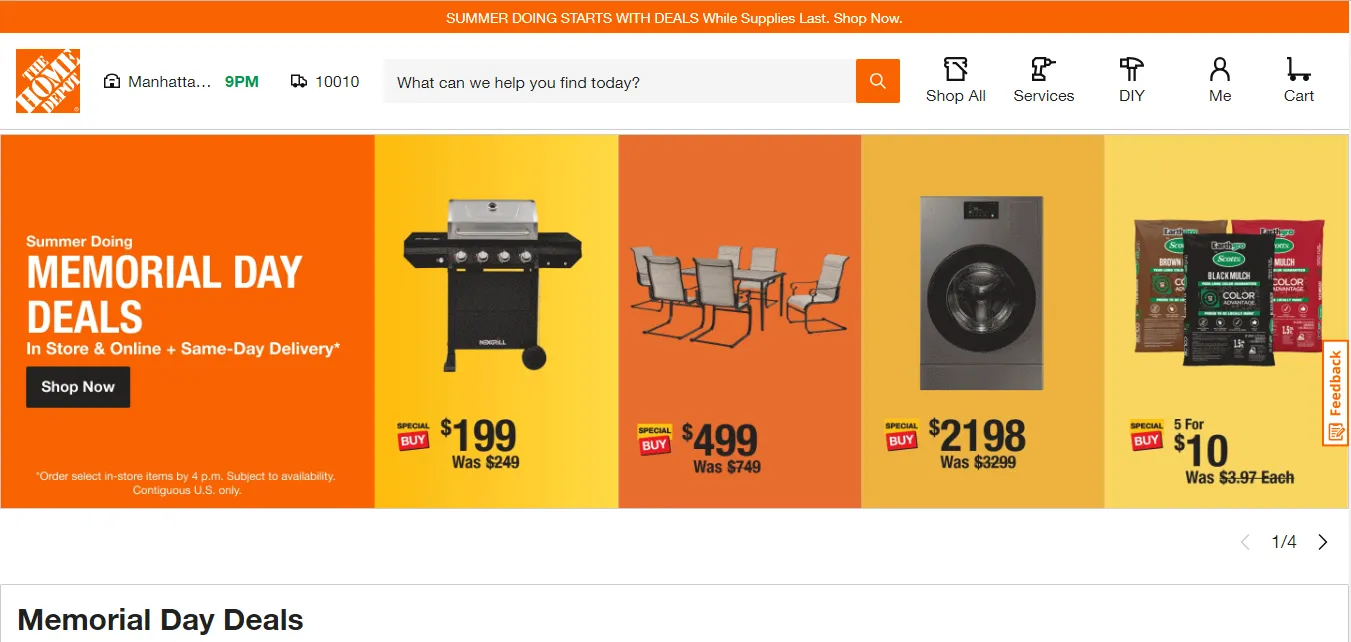
Home Depot’s ability to swiftly adapt to evolving market conditions has been instrumental to its success. By continually updating their technology and refining their marketing strategies, Home Depot remains relevant and customer-focused. This flexibility enables Home Depot to promptly respond to customer demands and market trends, maintaining a competitive edge. For example, during the COVID-19 pandemic, Home Depot quickly expanded its curbside pickup and online services to meet the surge in demand for contactless shopping options. This swift response not only met urgent customer needs but also underscored Home Depot’s dedication to safety and convenience.
In summary, Home Depot’s omnichannel marketing strategy excels through a blend of customer-centric practices, advanced technological integration, data-driven marketing, seamless channel integration, and strategic agility. These factors collectively create a compelling and consistent customer experience, solidifying Home Depot’s position as a leader in the home improvement retail industry. By emphasizing these key elements, Home Depot consistently exceeds customer expectations, driving enhanced loyalty, engagement, and business growth.
Measuring the Success of Omnichannel Marketing Examples
Measuring the success of omnichannel marketing examples is crucial to understanding their impact and identifying areas for improvement. By focusing on key performance indicators (KPIs), employing the right tools and techniques for measurement and analysis, and adjusting strategies based on analytics, businesses can ensure their omnichannel efforts are both effective and efficient. This section will delve into these aspects, providing detailed insights and omnichannel marketing examples to illustrate their application.
Key Performance Indicators (KPIs) for Omnichannel Marketing
Key Performance Indicators (KPIs) are metrics used to evaluate the success of an omnichannel marketing strategy. These KPIs provide valuable insights into customer behavior, campaign effectiveness, and overall business performance.
One critical KPI is Customer Lifetime Value (CLV), which measures the total revenue a business can expect from a single customer account throughout the business relationship. CLV helps assess the long-term value of customers acquired through omnichannel strategies. For instance, an e-commerce retailer might calculate CLV by analyzing the average purchase value, purchase frequency, and customer retention rate across online and offline channels, enabling them to understand and maximize the value of their customer base.
Another essential KPI is the Conversion Rate, indicating the percentage of visitors who complete a desired action, such as making a purchase or signing up for a newsletter. This metric is vital for assessing the effectiveness of omnichannel marketing efforts. For example, a fashion brand might track the conversion rate of visitors from social media ads who make purchases on their website and in-store, comparing the effectiveness of different channels and optimizing their strategy accordingly.
The Customer Retention Rate measures the percentage of customers who continue to do business with a brand over a specific period. High retention rates indicate successful customer engagement and satisfaction. For example, a subscription box service might monitor the retention rate of its customers by analyzing renewal rates across different channels, such as email reminders and in-app notifications, to ensure they are effectively maintaining customer loyalty.
Average Order Value (AOV) calculates the average amount spent by customers per transaction. This metric helps businesses understand purchasing behavior and the effectiveness of upselling and cross-selling strategies. For instance, a home improvement store might evaluate the AOV of customers who shop both online and in-store, using this data to optimize product recommendations and promotions to increase the average spend per transaction.
Lastly, the Net Promoter Score (NPS) measures customer satisfaction and loyalty by asking customers how likely they are to recommend the brand to others. This KPI provides insights into customer sentiment and brand advocacy. For example, a travel agency might use NPS surveys to gather feedback from customers who book trips online and through physical offices, identifying areas for improvement in their omnichannel strategy to enhance overall customer satisfaction.
Adjusting Strategies Based on Analytics
Analyzing data and KPIs is only the first step; the true value lies in using these insights to adjust and improve omnichannel marketing strategies. Here are some ways businesses can leverage analytics to refine their approaches:
Identifying and addressing weak points in the omnichannel strategy is crucial. Analyzing data helps pinpoint areas where the strategy is underperforming, such as low conversion rates on specific channels or high drop-off rates in the customer journey. For example, a clothing retailer might notice a high cart abandonment rate on its mobile app. By analyzing customer feedback and behavior, they could identify usability issues and optimize the app’s checkout process, reducing abandonment rates and increasing conversions.
Enhancing personalization is another vital aspect. Data insights enable businesses to deliver more personalized experiences by understanding customer preferences and behaviors. For instance, an online bookstore might use purchase history and browsing data to recommend personalized book suggestions via email and on-site recommendations, increasing customer engagement and sales by catering to individual tastes.
Optimizing marketing spend based on channel performance is essential for maximizing ROI. By tracking the performance of different channels, businesses can allocate their marketing budget more effectively, focusing on the most profitable and impactful channels. For example, a travel agency might analyze the ROI of its various marketing campaigns and shift more budget toward social media ads that are driving higher conversions and customer engagement.
Improving the customer experience is another key benefit of analytics. Feedback and analytics provide insights into the customer experience, highlighting areas for improvement. For example, a restaurant chain might use NPS surveys and online reviews to gather feedback on its service quality across different locations. By addressing common issues identified through these insights, they can improve overall customer satisfaction and loyalty.
Finally, conducting A/B testing and experimentation on different elements of the omnichannel strategy, such as email subject lines, website layouts, or promotional offers, helps identify the most effective approaches. For instance, an online fashion retailer might run A/B tests on different email subject lines to determine which ones generate higher open rates and click-through rates, refining their email marketing strategy accordingly to improve engagement and conversions.
In conclusion,
Throughout this blog post, we have explored various omnichannel marketing examples, highlighting the best practices, challenges, and future trends that define successful omnichannel strategies. The omnichannel marketing examples showcased real-world omnichannel marketing examples from various industries, demonstrating how brands like Ulta, Oasis, Timberland, Macy’s, and Home Depot have successfully implemented omnichannel strategies to drive customer engagement and business growth. By examining these omnichannel marketing examples, we have seen how leading brands effectively integrate multiple channels to create a cohesive and personalized customer journey.
In summary, omnichannel marketing is more than just a trend; it is a fundamental shift in how businesses interact with their customers. By learning from these omnichannel marketing examples and adopting best practices, businesses of all sizes can create cohesive, engaging, and personalized customer experiences that drive long-term success.




